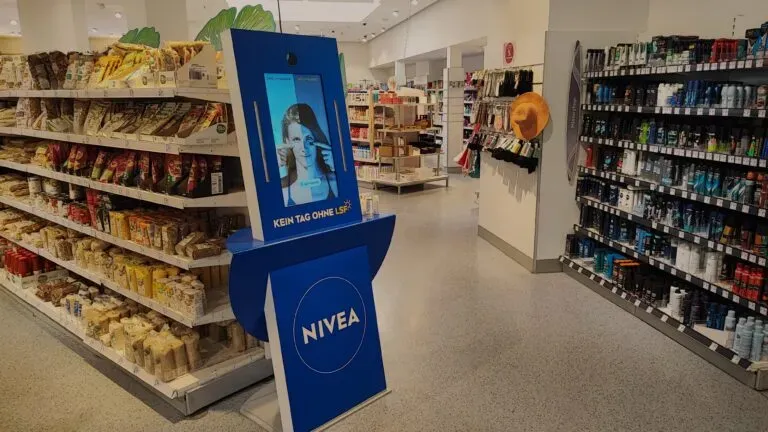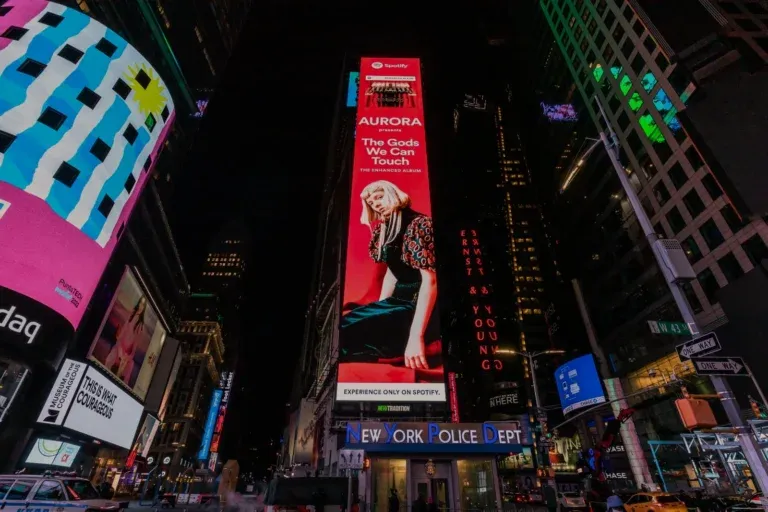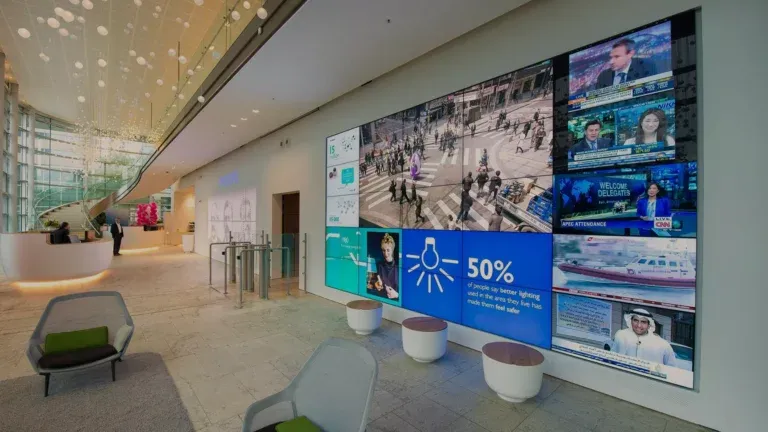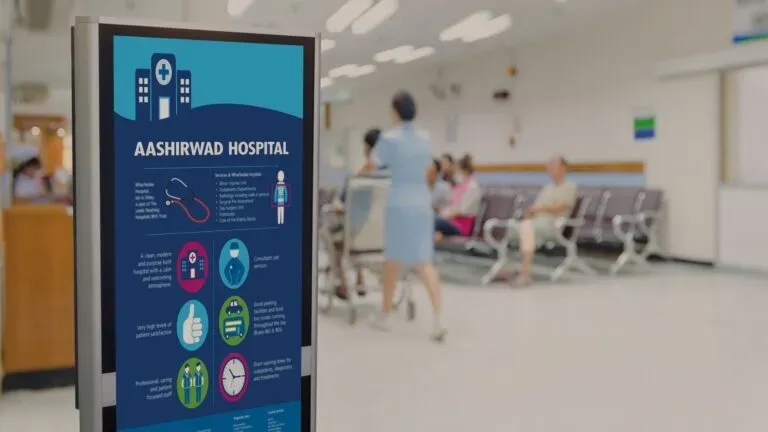How 4 factors of outdoor advertising influence our behavior
The psychological impact of outdoor advertising on the audience is a field worth exploring.
Imagine a city street without bright signs, billboards, and LED screens—a rather dull picture, right? Outdoor advertising has long been a part of our daily lives, yet few people think about how digital signage software actually influences our consciousness.
Outdoor advertising isn’t just about bright banners and catchy slogans; it’s a science based on the psychology of perception! It makes us pay attention, remember the information flashing before our eyes every day, and even react in certain ways. In this context, programmatic DOOH, or pDOOH, plays a significant role, using data to optimize displays.
In this article, we’ll examine four psychological factors that help it, particularly digital signage and pDOOH advertising, work more effectively and influence our decisions.
1. Capturing attention
The first task of outdoor advertising is to capture our attention. It achieves this through various techniques, often using digital signage software.
— Advertisers use bright colors and sharp contrasts to make their ads stand out against the urban environment. Programmatic DOOH automates this process, adapting ads to current conditions.
— Short, easily readable messages can instantly convey the ad’s idea, even as we pass by quickly. Advertisers often use large fonts and concise phrases that communicate the main idea of the product or service. Thanks to digital signage software, ad messages can change in real-time, drawing more attention.
— Animated or interactive ads attract even more attention, sparking curiosity and holding our gaze. For instance, a billboard with moving images or a touchscreen that allows viewers to interact with the ad can be much more effective than a static advertisement.
2. Emotional impact
After digital signage has captured our attention, advertising aims to evoke an emotional response by using images connected to basic emotions.
— Happy people, bright colors, and captivating stories create positive emotions and associate the product with pleasant experiences. For example, an advertisement for a travel agency showing smiling families on a beach can spark viewers’ desire for a vacation. Video wall software allows the creation of such emotional scenes on large screens, drawing even more attention.
— Ads highlighting the consequences of inaction or poor choices can motivate us to take action by creating a sense of urgency. For instance, an ad for an emergency service showing the aftermath of a car accident can make viewers think about road safety. Digital signage players can optimally deliver such emotional messages to reach a wider audience.
— Images of businesspeople, experts, or famous personalities create a sense of trust and authority. For example, an ad for a financial advisor showing a professionally dressed person at a desk can inspire viewers’ confidence in their services. Digital signage players help to display such detailed scenes on video walls, fostering an atmosphere of trust.
3. Stimulating purchases
Once an advertisement has stirred our emotions, it can prompt us to take specific actions.
— Clear calls to action, like “visit our website” or “buy now,” give us a sense of what to do next. For example, a clothing store sign with the message “Come in and save 50%” can encourage passersby to enter the store. Video wall software enables such messages to be displayed in real-time, adapting to different audiences.
— Images of satisfied customers or celebrities endorsing a product create an impression of popularity and social approval. For instance, a car ad featuring a celebrity behind the wheel can lead viewers to perceive the car as desirable and prestigious. Digital signage players make it easy to showcase such scenes on large screens in public spaces.
— Limited-time offers or “today only” deals create a sense of urgency, pushing us to act immediately. For example, a restaurant sign with “20% off for 24 hours” may prompt passersby to feel they’ll miss a great offer if they don’t visit the restaurant right away. Digital signage with quick content update capabilities maintains this urgency and effectively draws in customers.
4. The repetition effect
Considering that we encounter advertising daily, repeated exposure plays a significant role in its effectiveness. The more often we see an ad, the more our subconscious begins to recognize and remember it, increasing the likelihood of our response. Modern advertising screens allow for the effective repetition of key messages to better embed them in viewers’ memories.
For example, if we see an ad for a car regularly on our way to work throughout the week, when the time comes to choose a new car, we’ll remember that brand. This repetition effect can be significantly enhanced through Digital Out Of Home (DOOH) technology, as DOOH software allows for adjusting the frequency of displays and tailoring video ads to each location. This way, the repeated content is perceived as organic rather than intrusive, sparking more interest.
One of the main advantages of DOOH advertising is the ability to precisely schedule displays for a specific audience and time of day. This enables advertisers to tailor messages to the daily routines of potential customers. For instance, advertising screens may show one version of an ad in the morning when people are heading to work and a different one in the evening as they head home. The software helps track these displays and control the number of repetitions to achieve an optimal level of influence.
Video advertising in the DOOH segment has additional advantages due to its ability to create a multisensory experience. Moving images, bright colors, and sound make this type of advertising more dynamic and memorable. Compared to static ads, video ads can have a much stronger impact on the audience’s subconscious, increasing memorability and thus encouraging viewers to actively engage with the brand.
Modern DOOH networks offer advertisers unique opportunities to engage with audiences in key urban locations. By using advanced content display solutions in public spaces, adaptive and dynamic content can be shown that aligns with consumers’ current needs and moods. This makes advertising not just noticeable but truly relevant and timely.
Thanks to centralized content management systems, brands can quickly change or adjust their messages in real-time. This is especially useful during major events or changes in external conditions, such as weather or foot traffic, allowing ads to become more personalized.
DOOH advertising itself opens up new possibilities for tracking results, as integration with analytics platforms allows for analyzing audience behavior and assessing campaign effectiveness. This approach increases engagement and makes advertising messages an organic part of the environment that surrounds potential customers in everyday life.
In conclusion, we can be certain that outdoor advertising is a powerful tool for promotion and sales stimulation, capable of instantly capturing the interest and attention of a broad audience for your product or service. The use of algorithmic and programmatic advertising solutions gives advertisers even greater leverage over audiences. This is something we are witnessing and participating in right now.
We have reviewed only a small part of the psychological methods used in outdoor advertising. There is a wide range of psychological techniques and knowledge of cognitive mechanisms to influence our thoughts, emotions, and behavior. We can both protect ourselves from manipulation and increase the effectiveness of our own advertising campaigns. Many films have already been made about the advertising methods of the future, and we can already begin preparing for them.
Advision — Content Management System for remote management and media planning of broadcast video and audio content. We help offline businesses and advertising companies automate workflows and implement a robust Digital Signage infrastructure using our proprietary software and hardware solutions.
Contact us, and we will help you implement the most modern technologies to solve your problems!
Share the news




















